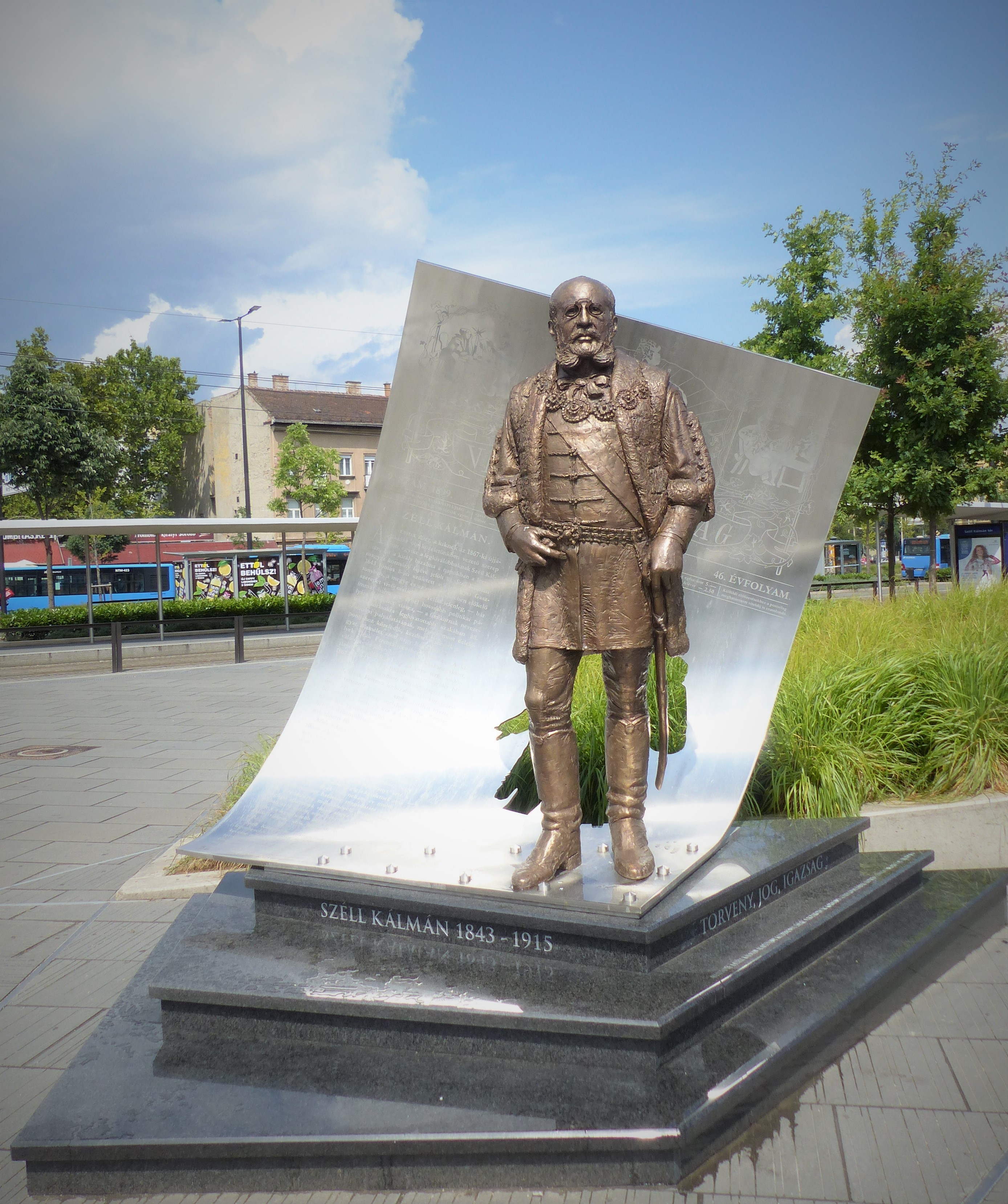|
Kálmán Széll
Kálmán Széll de Duka et Szentgyörgyvölgy (8 June 1843 – 16 August 1915) was a Kingdom of Hungary, Hungarian politician who served as Prime Minister of Hungary from 1899 to 1903. Early career He was born in the ancient Hungarian nobility, Hungarian noble family Széll de Duka et Szentgyörgyvölgy, that originally hailed from Vas County (former), Vas county, in the western region of the Kingdom of Hungary. His father was József Széll (1801-1871), Ispán, ispán-regent of Vas county, and his mother was a noblewoman, Júlia Bertha de Felsőőr (1817–1873). Among his Hungarian nobility, Hungarian noble ancestors were his maternal grandfather, Ignác Bertha de Felsőeőr (1780-1847), Ispán, vice-ispán of Vas County (former), Vas county, jurist, landowner, and his maternal great-grandfather, József Sümeghy de Lovász et Szentmargitha (1757–1832), royal counselor, jurist, landowner, and Ispán, vice-ispán of Zala County (former), Zala County. He studied in Pest, H ... [...More Info...] [...Related Items...] OR: [Wikipedia] [Google] [Baidu] |
Hungarian Nobility
The Hungarian nobility consisted of a privileged group of individuals, most of whom owned landed property, in the Kingdom of Hungary. Initially, a diverse body of people were described as noblemen, but from the late 12th century only high-ranking royal officials were regarded as noble. Most aristocrats claimed ancestry from a late 9th century Magyar leader. Others were descended from foreign knights, and local Slavic chiefs were also integrated in the nobility. Less illustrious individuals, known as castle warriors, also held landed property and served in the royal army. From the 1170s, most privileged laymen called themselves royal servants to emphasize their direct connection to the monarchs. The Golden Bull of 1222 enacted their liberties, especially their tax-exemption and the limitation of their military obligations. From the 1220s, royal servants were associated with the nobility and the highest-ranking officials were known as barons of the realm. Only those who ... [...More Info...] [...Related Items...] OR: [Wikipedia] [Google] [Baidu] |
Szentgotthárd
Szentgotthárd ( sl, Monošter; german: St. Gotthard) is the westernmost town of Hungary. It is situated on the Rába River near the Austrian border. History The town took its name from, and grew up round, the Cistercian Szentgotthárd Abbey, founded here in 1183. In 1664, it was the site of the Battle of Saint Gotthard, where an Austrian army led by Raimondo Montecuccoli defeated the Ottoman Empire so that the Turks had to agree to the Peace of Vasvár, which held until 1683. A second Battle of Saint Gotthard in 1705 was a victory for Rákóczi's anti-Habsburg Hungarian rebels. During World War II, Szentgotthárd was captured by Soviet troops of the 3rd Ukrainian Front on 31 March 1945 in the course of the Vienna Offensive. Notable people *Ferenc Joachim (1882–1964), painter *Alajos Drávecz (1866–1915), Slovenian ethnologist and writer *Ágoston Pável (1886–1946), Hungarian Slovene writer and poet, graduated here *János Brenner (1931–1957), Roman Catholic prie ... [...More Info...] [...Related Items...] OR: [Wikipedia] [Google] [Baidu] |
Sándor Wekerle
Sándor Wekerle (14 November 1848 – 26 August 1921) was a Hungarian politician who served three times as prime minister. He was the first non-noble to hold the office in Hungary. Biography He was born in Mór to a Danube Swabian family, in the comitatus of Fejér. His mother was Antónia Szép. After studying law at the Faculty of Law of the University of Budapest he graduated ''doctor juris''. He then entered the government service, and after a period of probation was appointed to a post in the ministry of finance. He still, however, continued an academic career by lecturing on political economy at the university. In 1886 Wekerle was elected to the House of Deputies, became in the same year financial secretary of state, and in 1889 succeeded Kálmán Tisza as minister of finance. He immediately addressed himself to the task of improving the financial position of the country, carried out the conversion of the state loans, and succeeded, for the first time in the history ... [...More Info...] [...Related Items...] OR: [Wikipedia] [Google] [Baidu] |
Gyula Andrássy The Younger
Count Gyula Andrássy de Csíkszentkirály et Krasznahorka the Younger ( hu, Ifj. Andrássy Gyula; 30 June 1860 – 11 June 1929) was a Hungarian politician. Biography The second son of Count Gyula Andrássy and Countess Katinka Kendeffy, the younger Andrássy became under-secretary in the Sándor Wekerle ministry in 1892; in 1893, he became Minister of Education, and, in June 1894, he was appointed minister in attendance on the king, retiring in 1895 with Wekerle. In 1898, with his elder brother, he left the Liberal Party but returned to it after the fall of the Bánffy ministry. In 1905, he was one of the leaders of the Coalition which brought about the fall of the Liberal Tisza ministry. In 1906 he became Minister of the Interior in the compromise Wekerle cabinet and held that office until the fall of the ministry in 1909. In 1912, he represented Austria-Hungary in the diplomatic endeavor to prevent the outbreak of the Balkan War. In 1915, he urged peacemaking and an exten ... [...More Info...] [...Related Items...] OR: [Wikipedia] [Google] [Baidu] |
